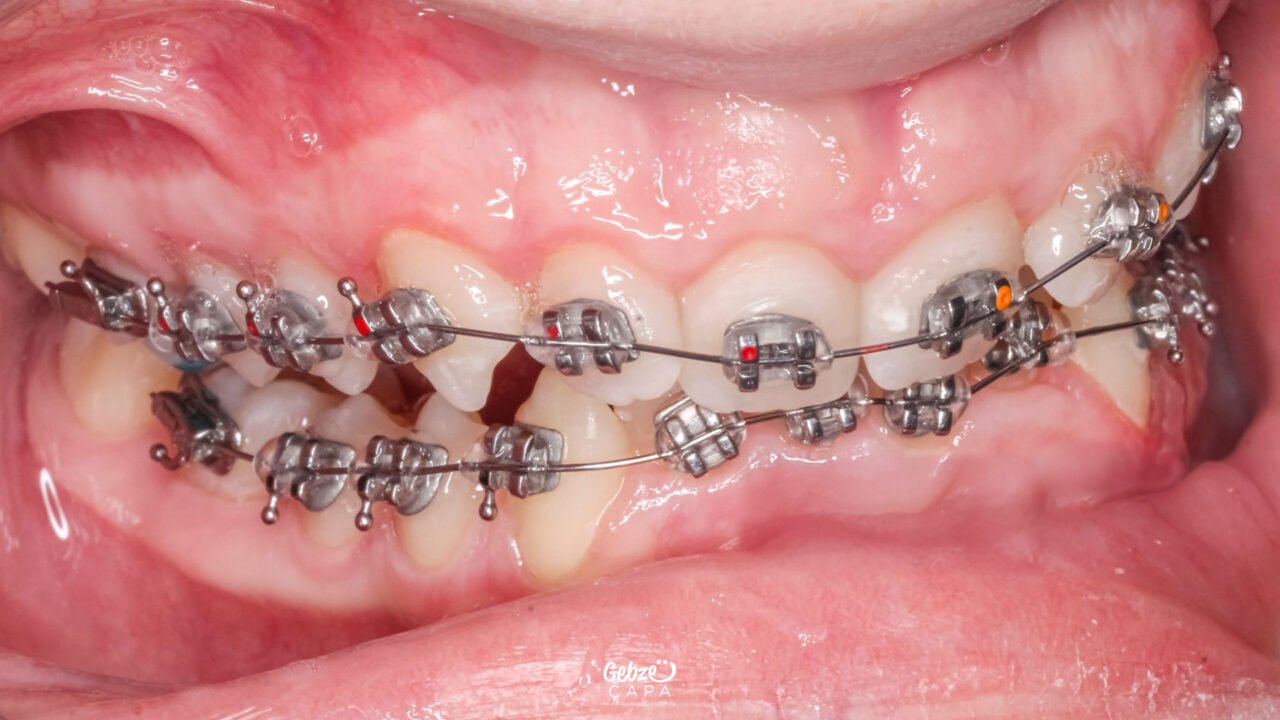Crooked Teeth Treatment
Smiling is one of the most sincere and impactful forms of communication. Sometimes a single smile can convey more than dozens of words. However, when our teeth are crooked, the natural smile most people harbor can give way to a shy smile. A misaligned teeth can affect our self-confidence and prevent us from speaking freely in social settings, or even laughing.
But crooked teeth aren’t just an aesthetic issue. Improperly aligned teeth make brushing difficult, leading to plaque accumulation. Over time, this increases the risk of cavities, gum disease, and bad breath. In other words, it’s not just about looking good; it’s also about maintaining a healthy mouth.
Thanks to advancements in dentistry, treating crooked teeth is now both more comfortable and aesthetically pleasing. From traditional metal braces to nearly invisible clear aligners, there are many options available. Furthermore, these treatments are suitable not only for young people but also for adults. There’s no age limit for a beautiful smile.
What are crooked teeth?
Crooked teeth, simply put, are conditions where teeth don’t line up properly in the jaw. This means they sometimes overlap, sometimes emerge crooked, or have unbalanced spaces between them. While this may seem like a purely aesthetic issue at first glance, it’s actually a significant issue affecting oral and dental health. Teeth positioned too close together or at an angle make brushing difficult. Over time, plaque buildup in these areas can lead to cavities, gingivitis, and even bad breath.

In some people, crooked teeth are entirely genetic. In other words, if a parent has a similar tooth arrangement, the likelihood of a child developing the same condition is quite high. However, genetic factors alone are not always the determining factor. Factors such as prolonged pacifier use during childhood, thumb-sucking habits, mouth breathing, or the early loss of primary teeth can also cause teeth to deviate from their ideal position.
Sometimes, the jaw structure and tooth size are disproportionate. If the jaw is small but the teeth are large, there isn’t enough space for the teeth to align, creating a crooked appearance. Similarly, if the jaw is wide but the teeth are small, gaps can develop between the teeth. In both cases, the smile’s aesthetics are compromised, and over time, the function of the teeth can be affected.
Why Do Teeth Crooked?
There are many different reasons why teeth can grow crooked. Every person’s jaw structure, genetic inheritance, and childhood habits are different. However, certain factors can prevent teeth from aligning correctly, leading to a crooked appearance.
Genetic Factors
Genetics play a significant role in tooth alignment. If a family member has crooked teeth or a narrow jaw, it’s quite common for children to experience similar problems. In other words, some people are actually born with this predisposition. Therefore, genetic factors are one of the primary causes of crooked teeth.
Narrow Jaw
In some people, the jawbone isn’t wide enough for the teeth to align optimally. A small jaw restricts the space available for teeth, and teeth crook or overlap to create space. This can be both aesthetically unsightly and difficult to clean, increasing the risk of cavities.
Early or Late Loss of Primary Teeth
Baby teeth act as a guide for the proper eruption of permanent teeth. If these teeth are removed too early, the underlying permanent teeth may become misaligned and emerge in the wrong position. Furthermore, leaving primary teeth in the mouth for an extended period can cause a similar problem by blocking the space where permanent teeth will emerge.

Harmful Oral Habits
Childhood habits such as thumb sucking, prolonged pacifier use, nail biting, or pencil biting can put pressure on the jaw structure and shift the direction of the teeth. While these behaviors may seem innocent, they can negatively impact jaw and tooth development over time.
Trauma and Injuries
Blows to teeth or accidents in the jaw area can cause teeth to become displaced or shift over time. Trauma, particularly during childhood, can cause permanent disruption of tooth alignment during growth.
What Problems Can Crooked Teeth Cause?
Many people consider crooked teeth merely an aesthetic issue; however, the effects of this condition extend far beyond appearance. Misaligned teeth are a problem that directly affects both oral hygiene and overall oral health. With crooked teeth, toothbrushes and flossing can’t reach every area. Food particles, especially in areas where teeth are crowded, easily accumulate, paving the way for plaque formation and tooth decay.
However, plaque accumulation in uncleaned areas not only leads to cavities but also to gum disease. This process begins with symptoms such as redness, swelling, and bleeding gums. If left untreated, it can progress to gum recession and even tooth loss.
Another negative impact of crooked teeth is on the jaw joint. Misalignment, or the teeth not meeting properly, puts undue strain on the jaw muscles. Over time, this can cause pain, fatigue, and even a clicking sound when opening the mouth.
Furthermore, irregular teeth can negatively impact a person’s self-confidence. Hesitating to smile, covering one’s mouth while speaking, or choosing not to smile when taking photos are all psychological manifestations of crooked teeth. Especially in adolescents, this can seriously damage social relationships and self-confidence.

Crooked Teeth Treatment
Crooked teeth can now be treated with highly advanced methods for both aesthetic and comfort. Orthodontic treatment, the most common option, gradually adjusts teeth to their ideal position with the help of braces or brackets. The patient can choose from metal, ceramic, or lingual braces, depending on their needs. Clear aligner treatment (Invisalign) is one of the most comfortable alternatives in recent years. Its virtually invisible design ensures no aesthetic concerns and is easily removed and reattached.
In some cases, one or more teeth may need to be extracted due to a narrow jaw; this procedure is performed to prepare for orthodontic treatment. If the jaw is severely deformed, orthognathic surgery repositions the jawbone to achieve both functional and aesthetic balance.


